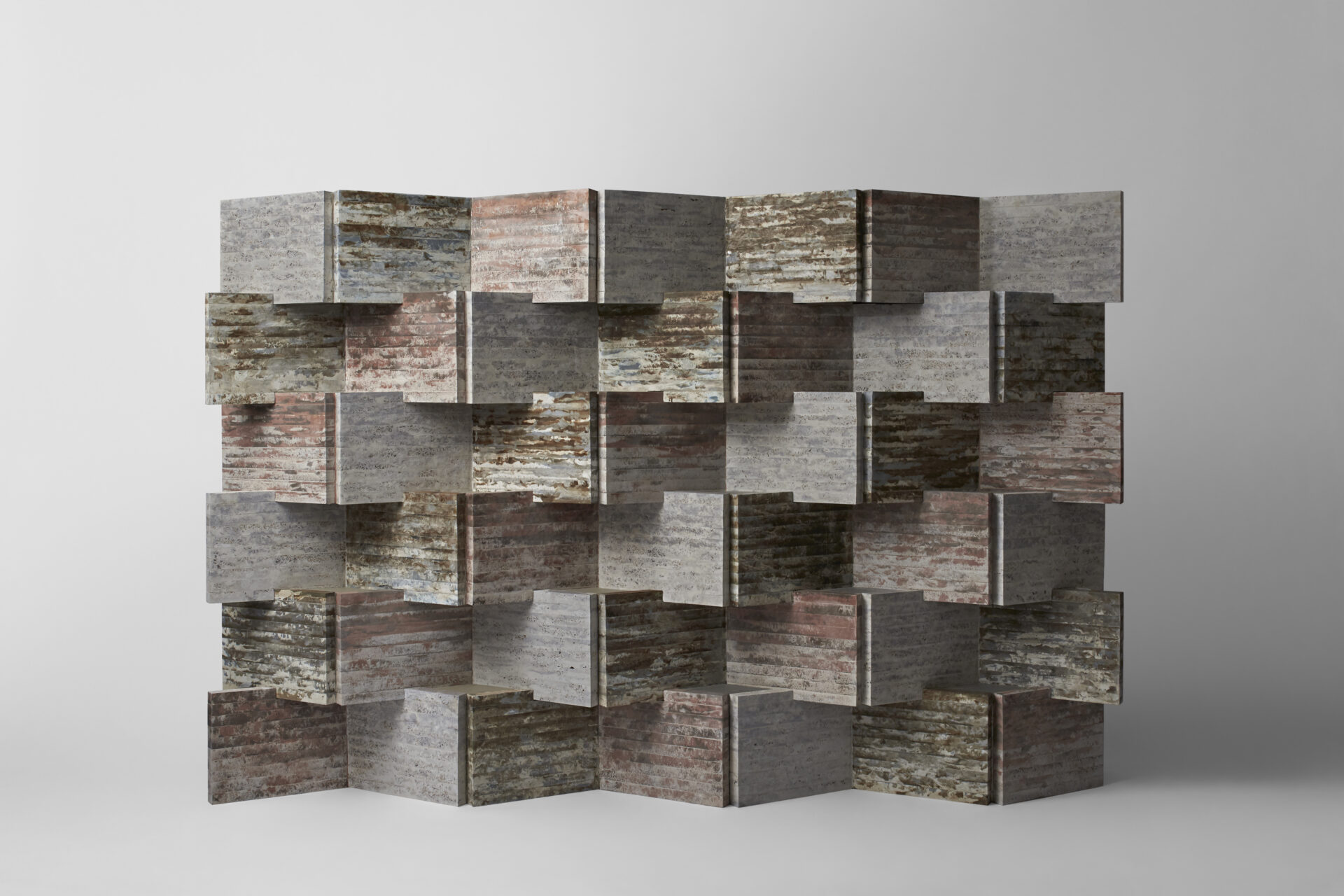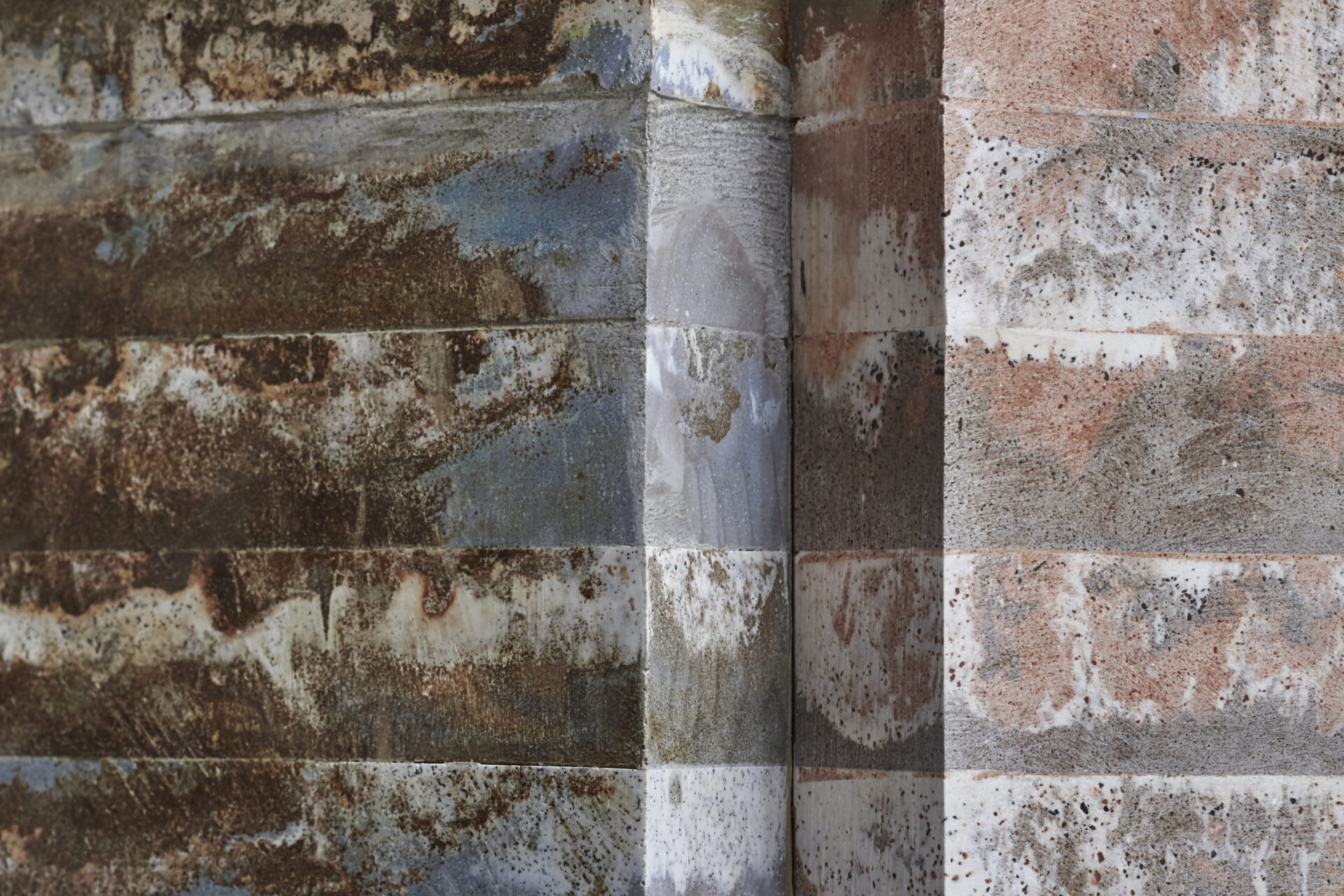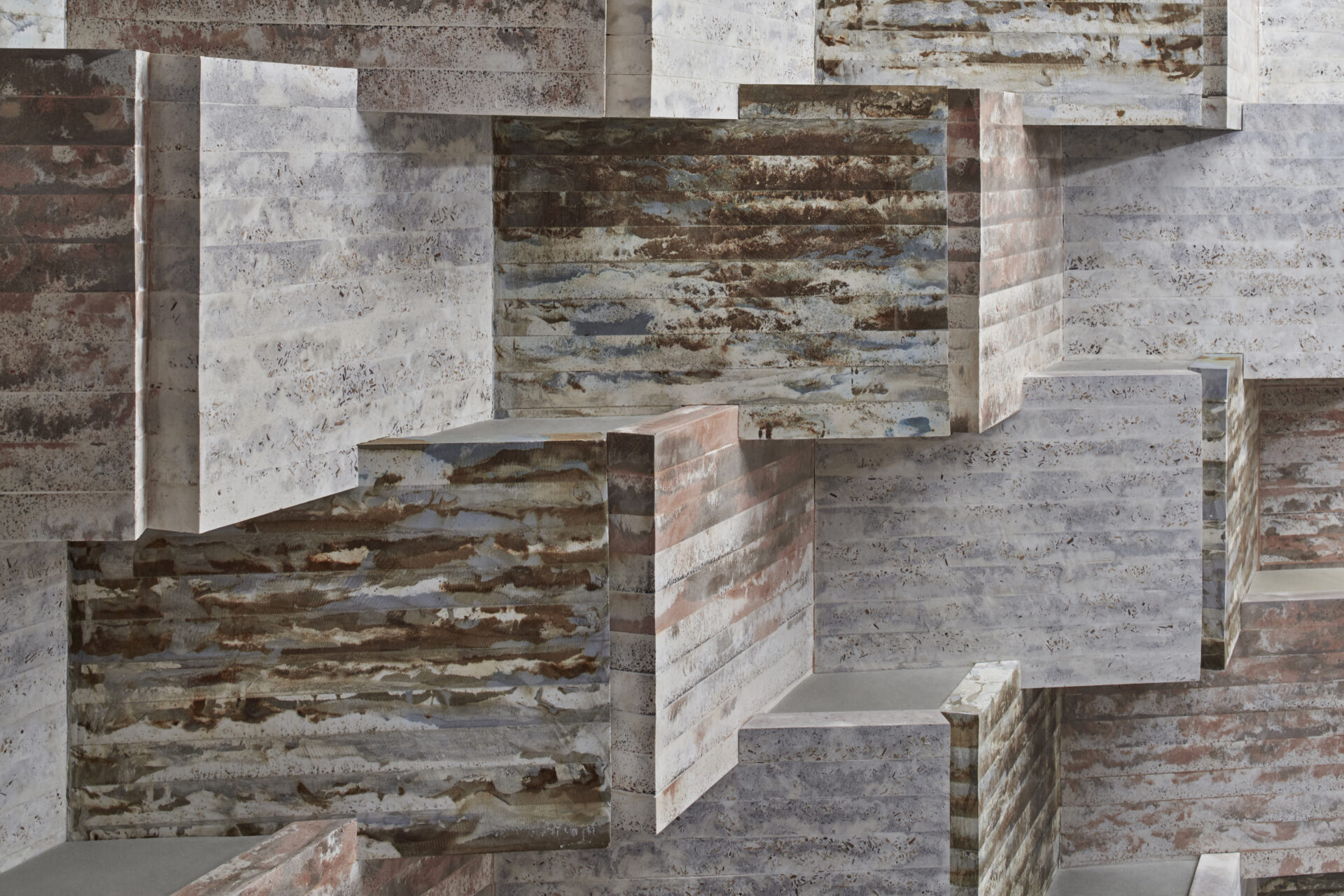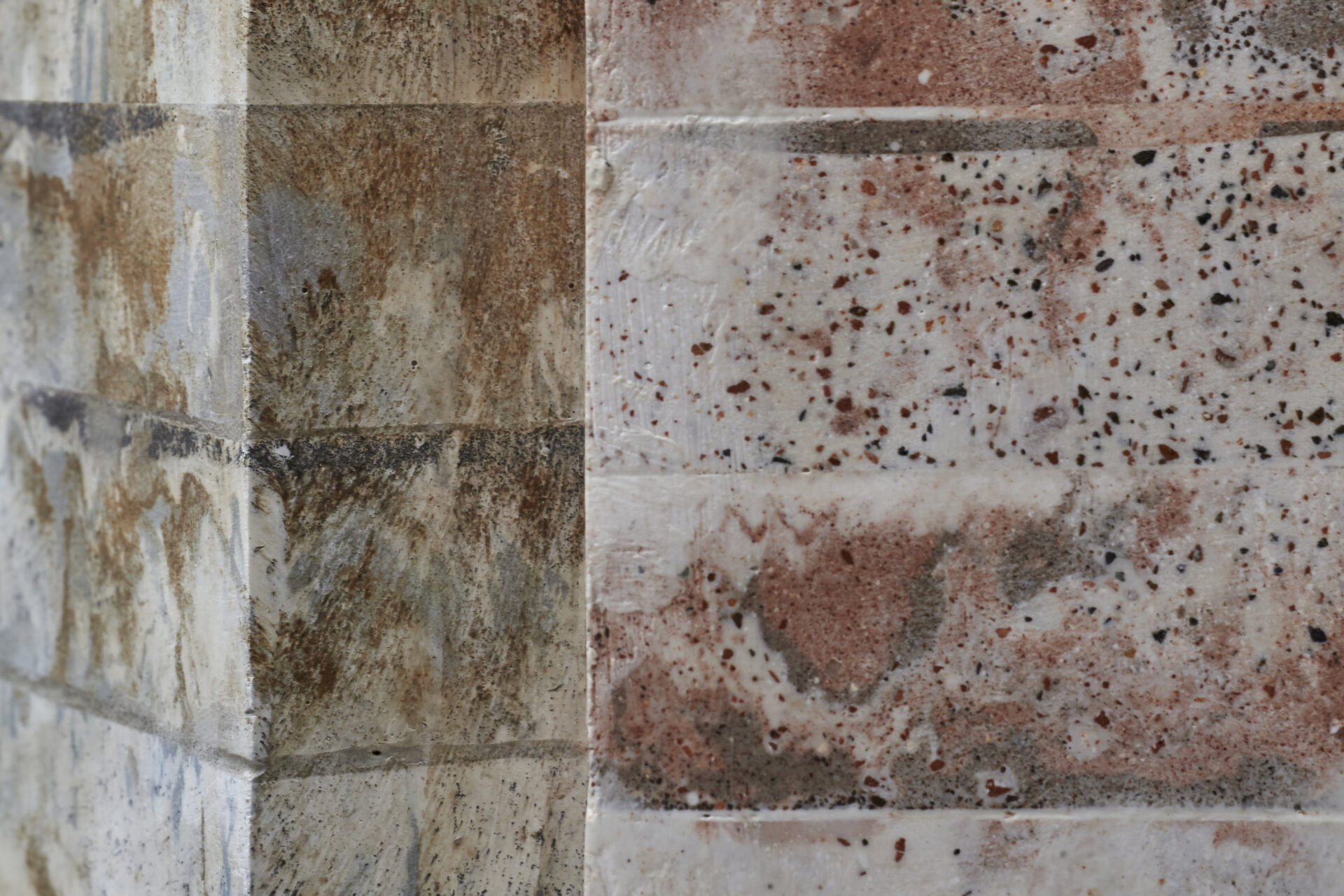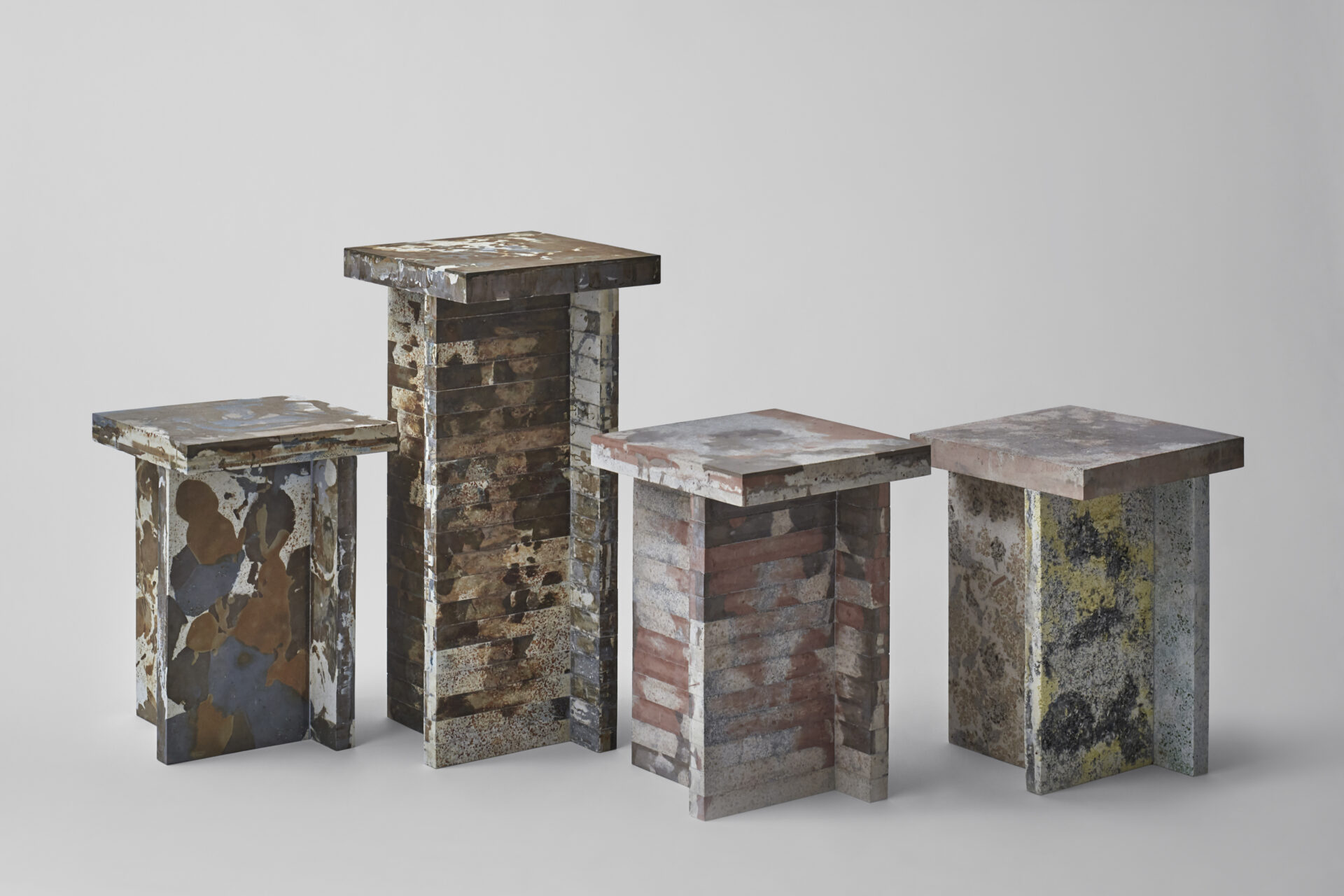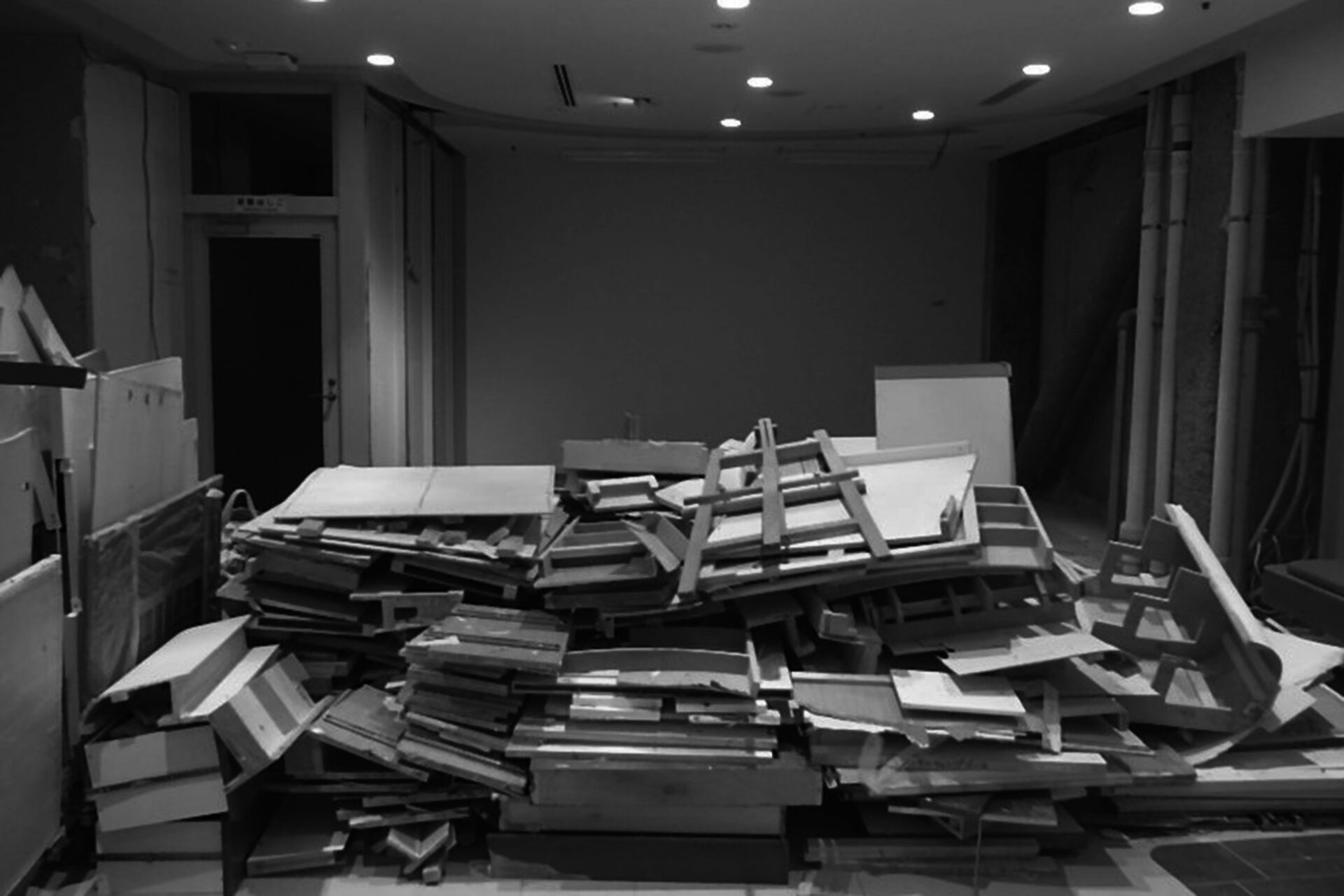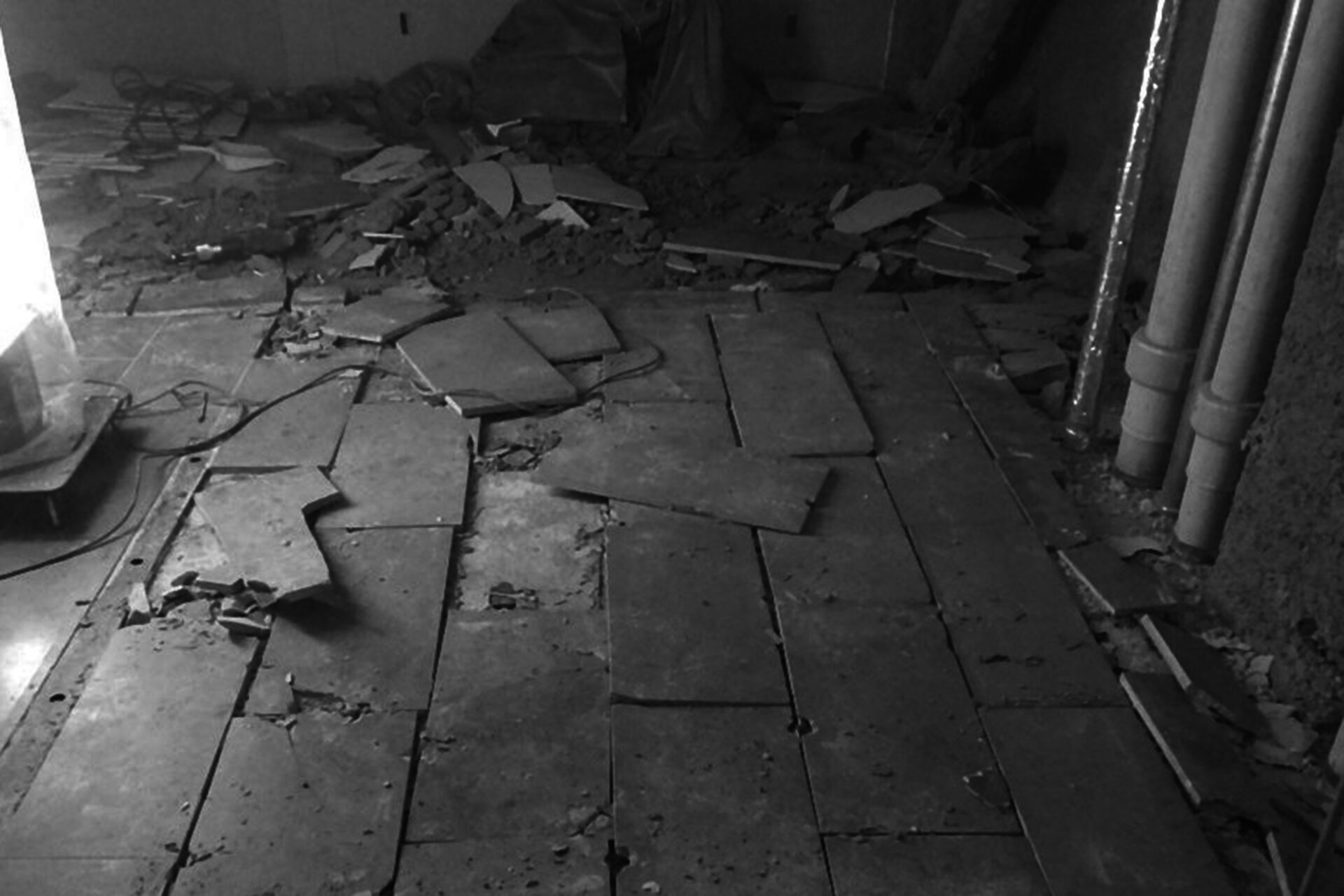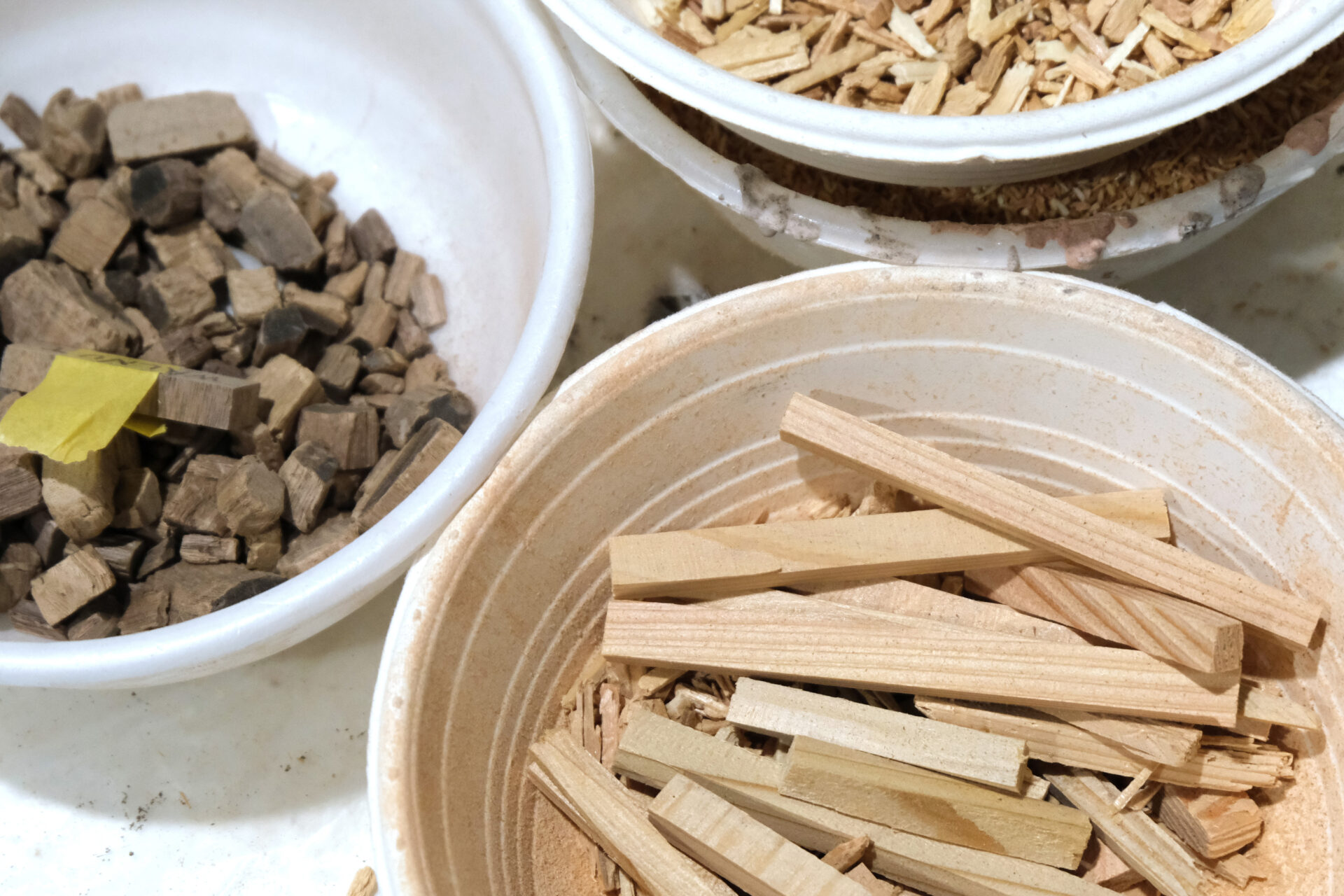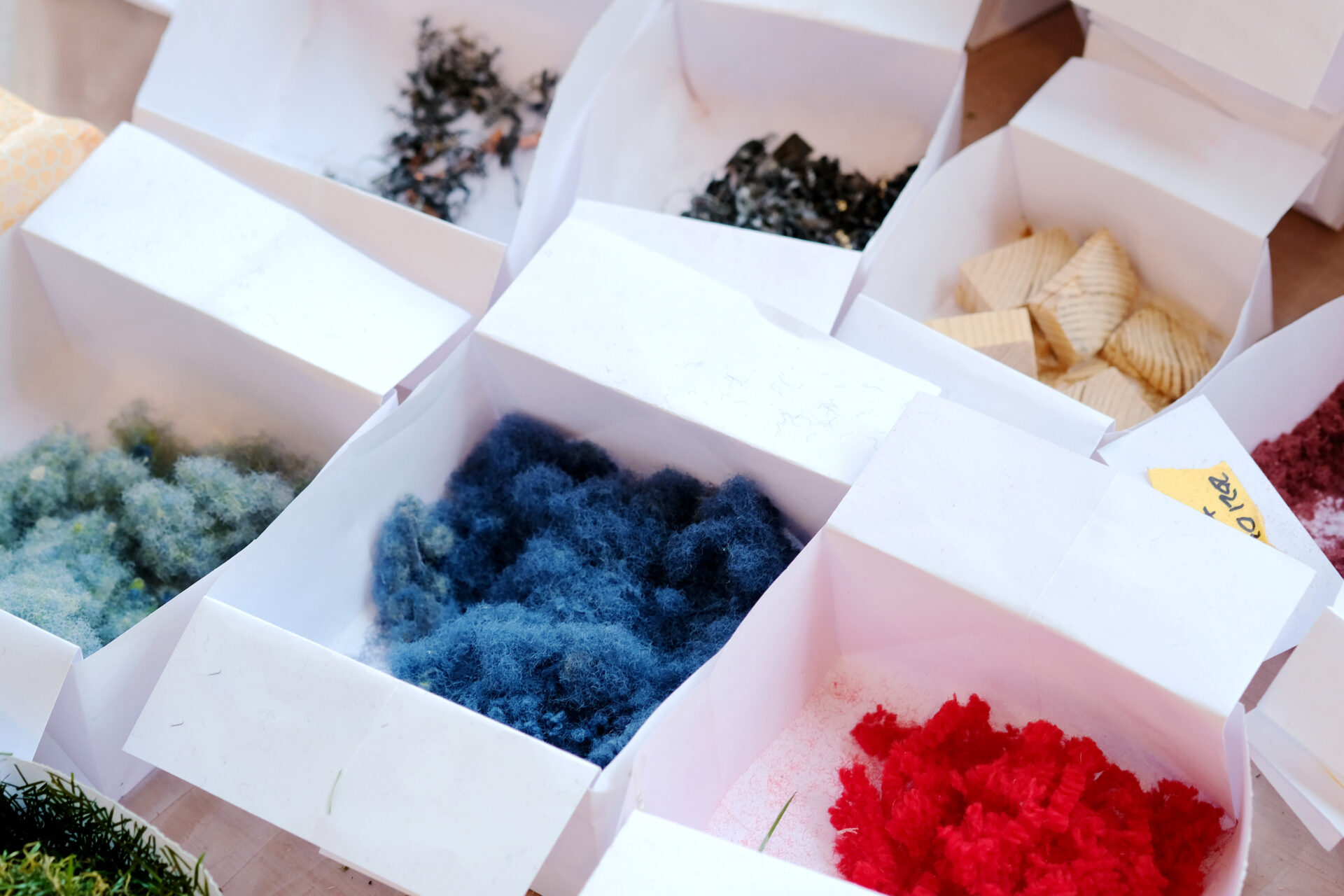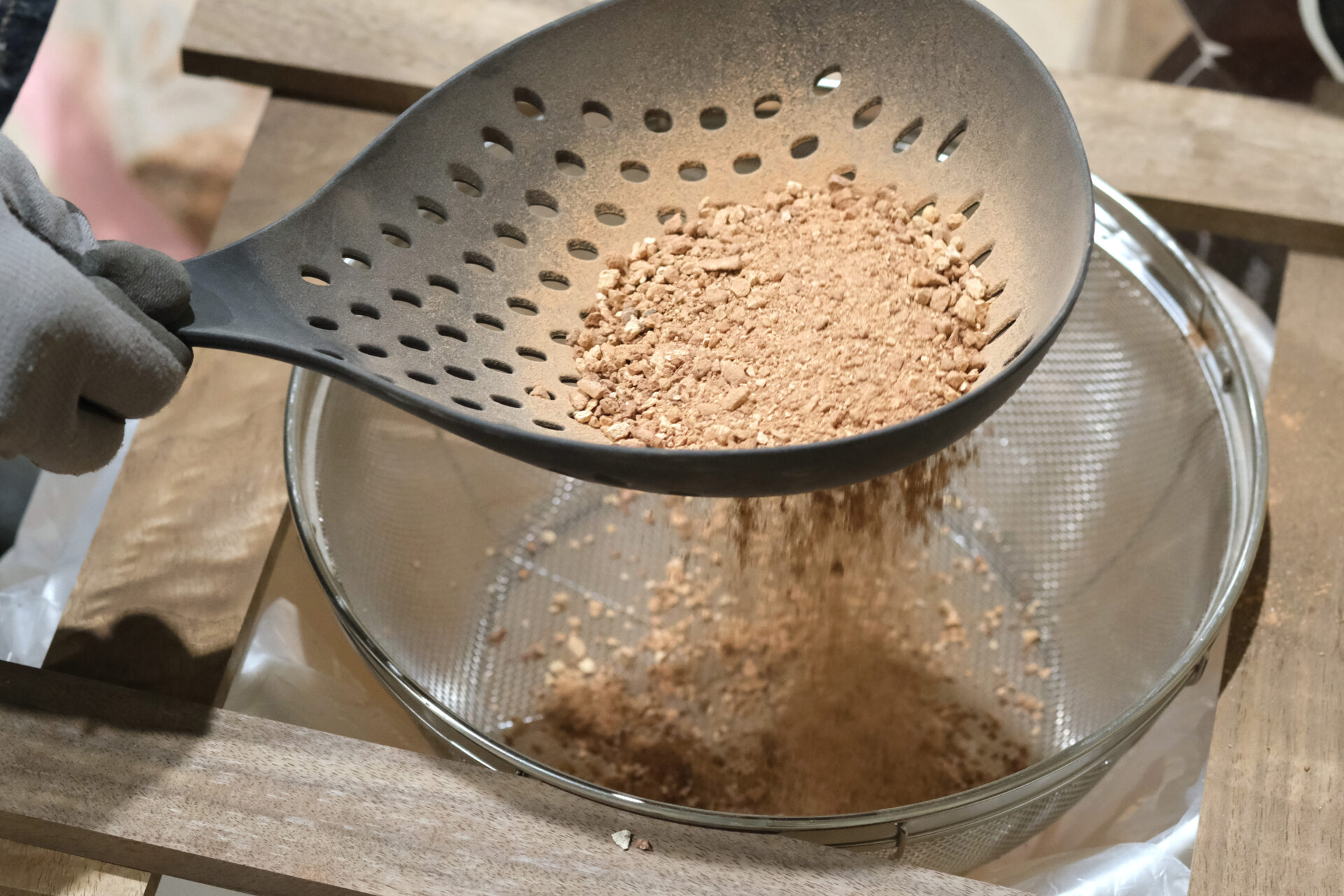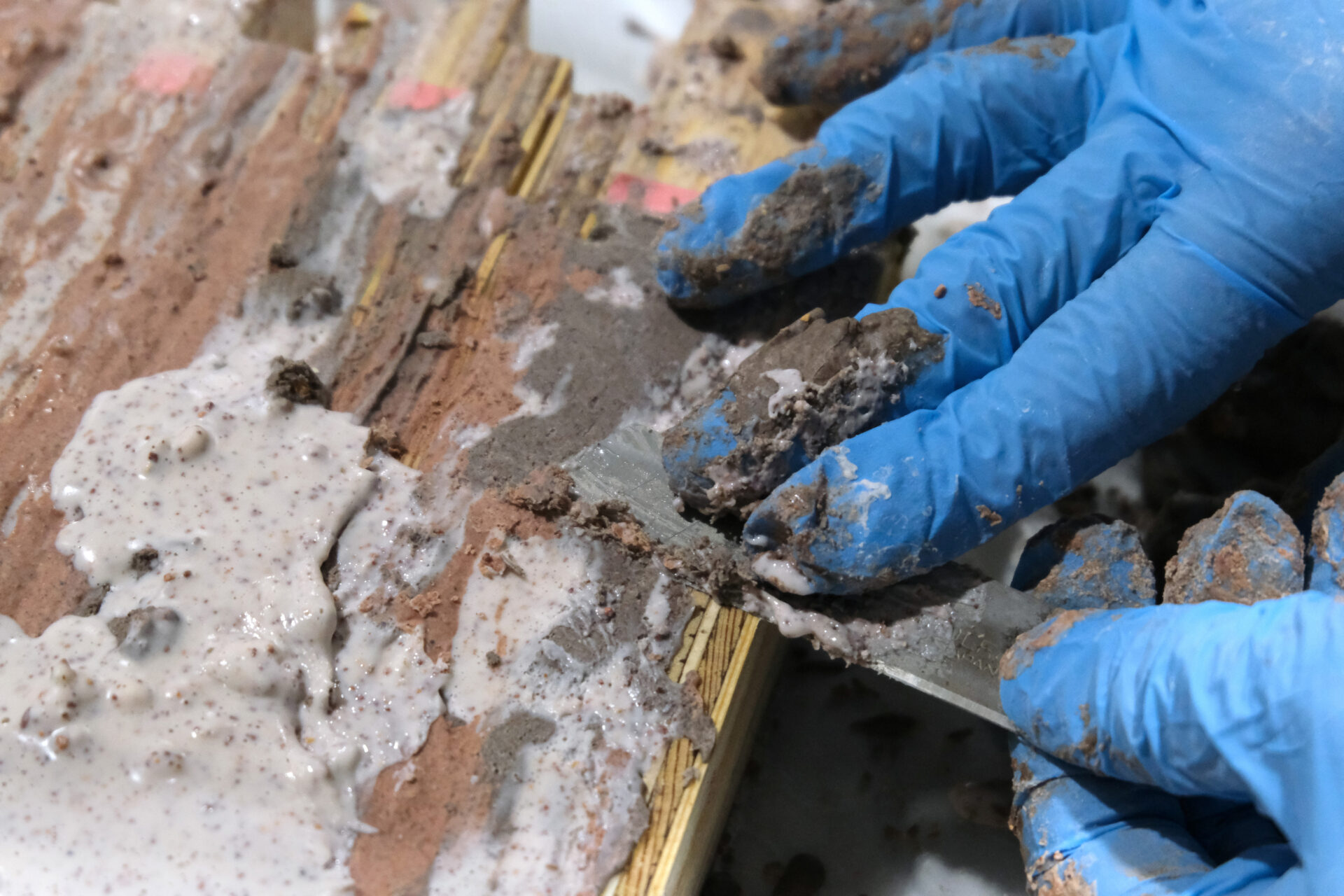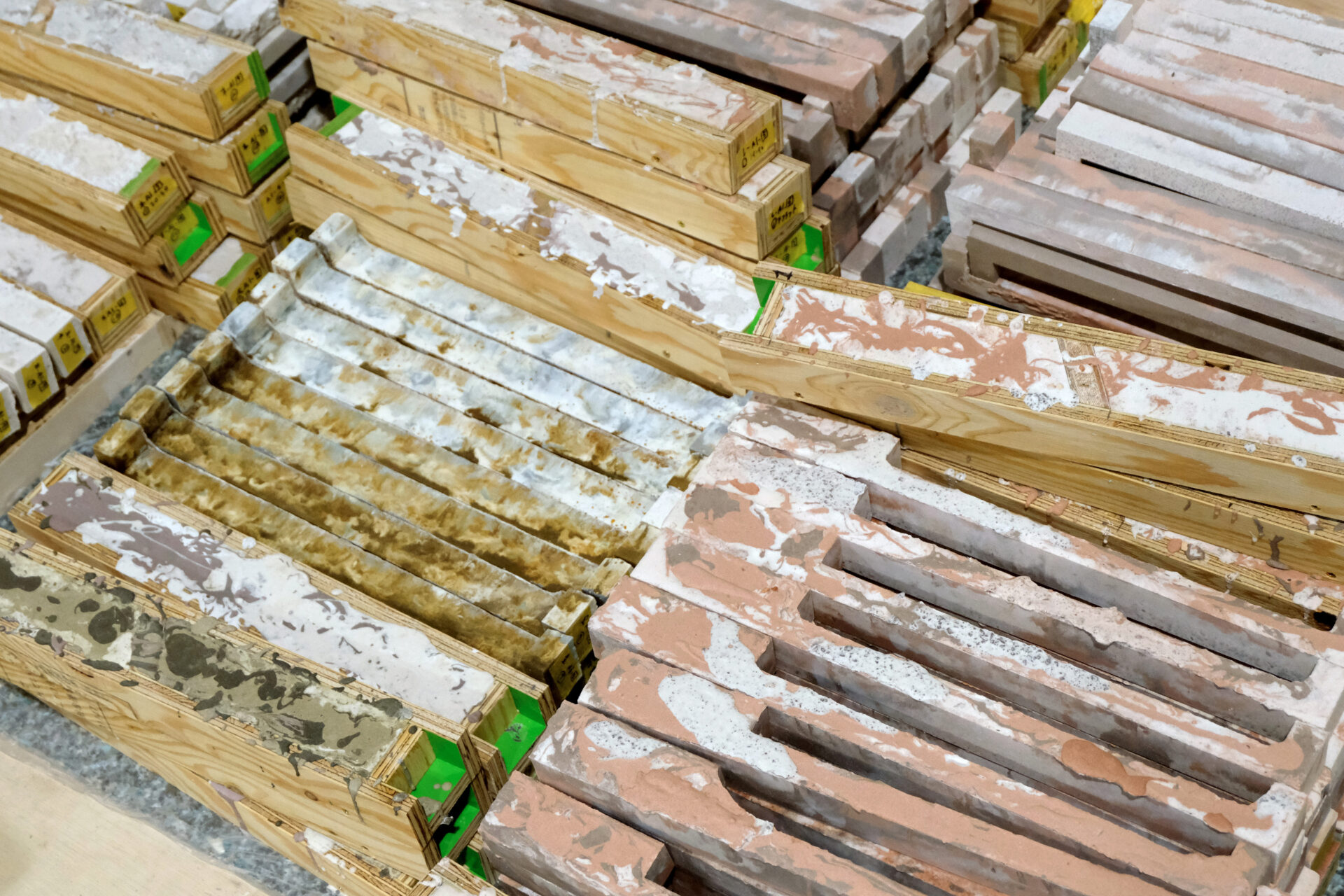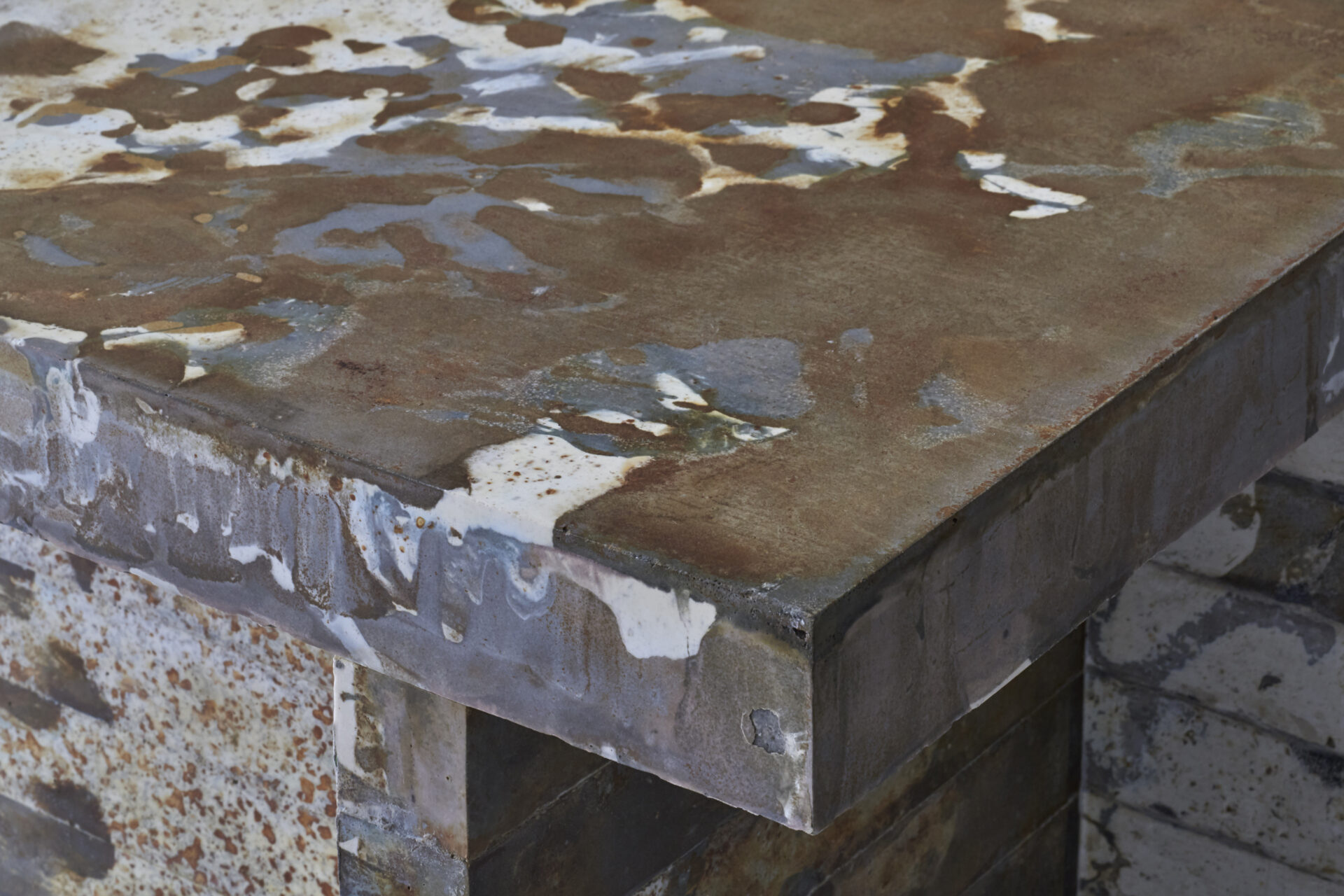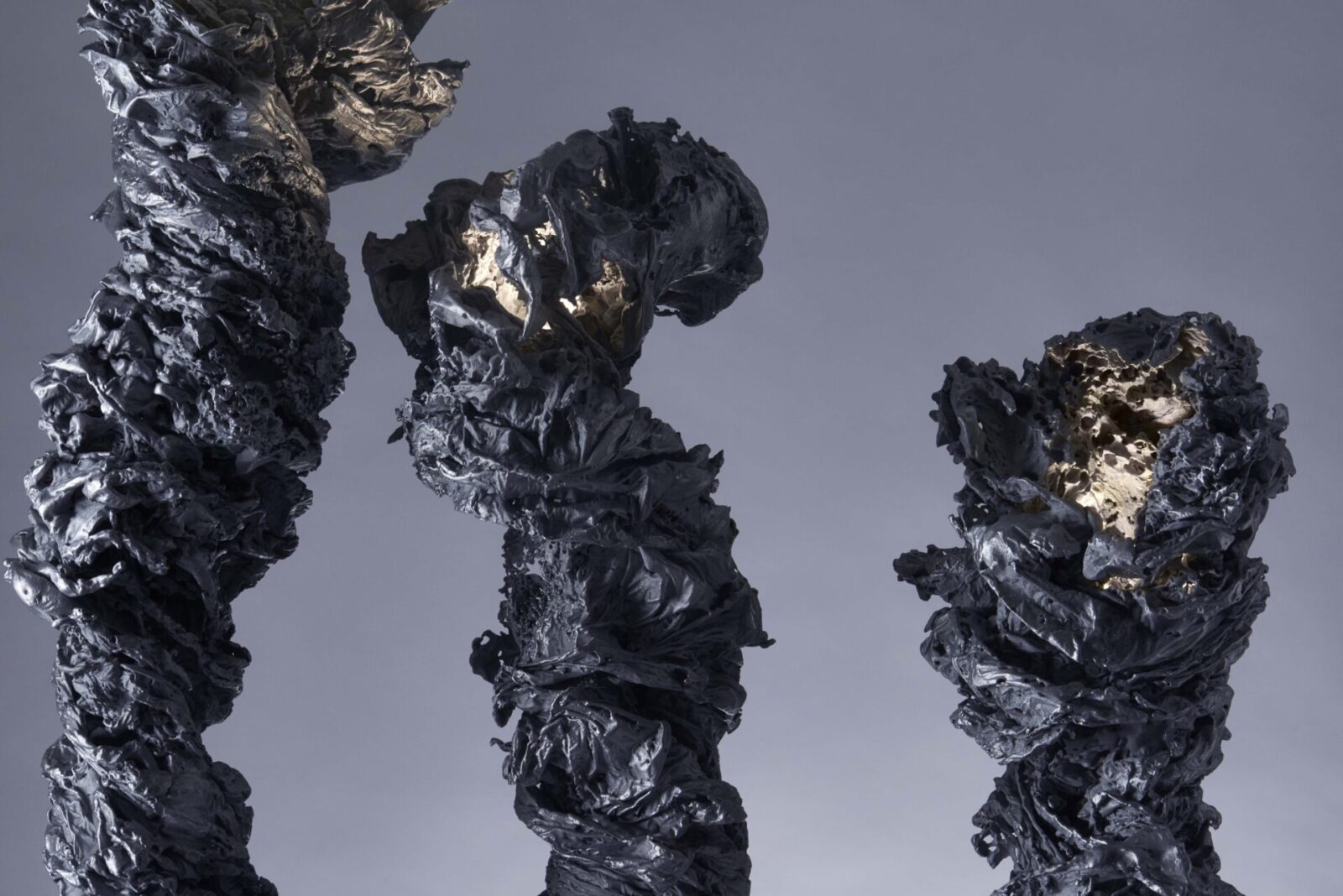Link
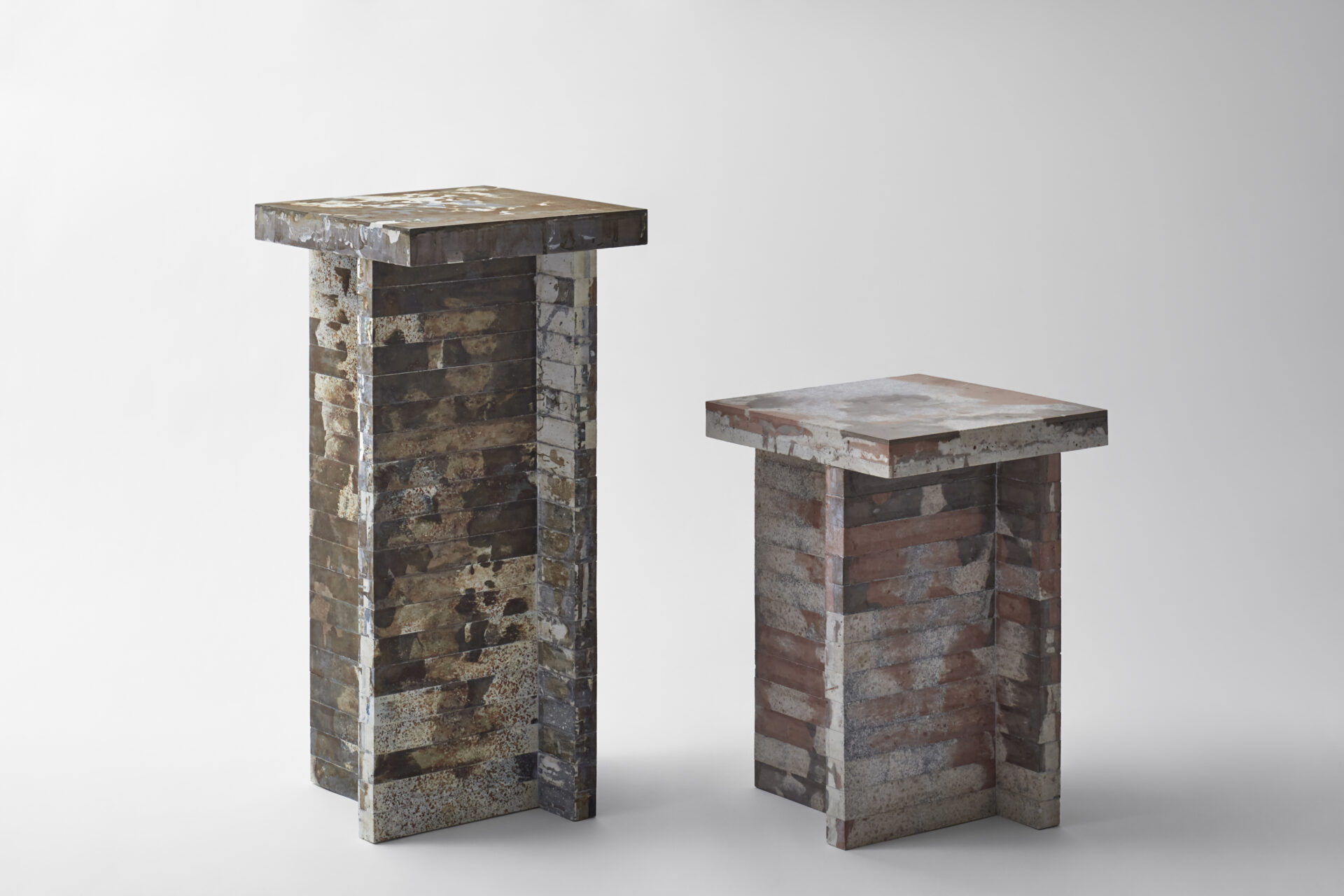
Exploring the possibilities of waste materials of commercial building
Link is research project which is the part of the Semba Ethical Design Thinking activities. This project is focusing on discarded building materials coming from the demolition of commercial buildings as well as mock-ups materials produced in large quantities during the planning and design stages, exploring the various possibilities of recycling. It provides an opportunity to consider an ideal way to incorporate mass-produced and consumed materials into a recycling system.
Project Details
Product
Process
Current status of demolition and disposal of commercial building
Commercial buildings in Japan have an average lifespan of 5 to 10 years, from construction to demolition and disposal. Compared to offices and other spaces, the life cycle of those buildings is very short, which is one of the reasons why reducing waste and recycling materials is becoming a major issue. Buildings that were created with a lot of effort are being dismantled or demolished for several reasons. Even though they are still functional, they are being considered as non reusable. Through our project, we are exploring the various possibilities of recycling waste building materials other than material recycling and thermal recycling.
Inherit the memory of the place as a new material
By disassembling and reconstructing building materials that have lost their original functions, we are looking into the possibility of using them as new materials in order to bring out a different appeal while keeping the memories they inherited in the place they used to be. Waste building materials such as wood, metal, and bricks are crushed into small pieces and solidified with different degrees of granularity. The rough grains are used as materials that create patterns whereas the fine grains are transformed into pigments. These physical modifications lead to the creation of new expressions. Other than grains, the oxidation of the metal gives more depth to the expression. After those transformations, the materials are molded to create a modular system for a variety of applications, from furniture to wall surfaces. The ideas and the design process of this project can be applied to different contexts and with other waste materials.
